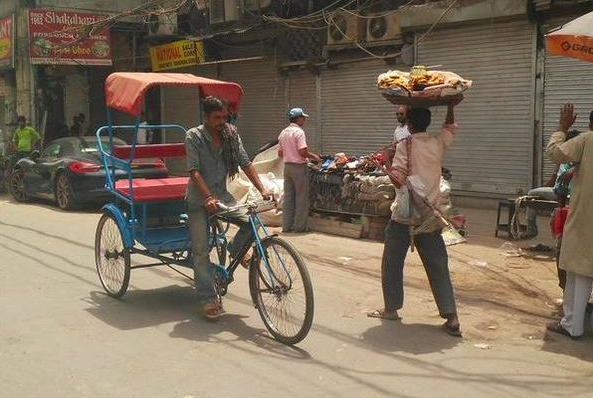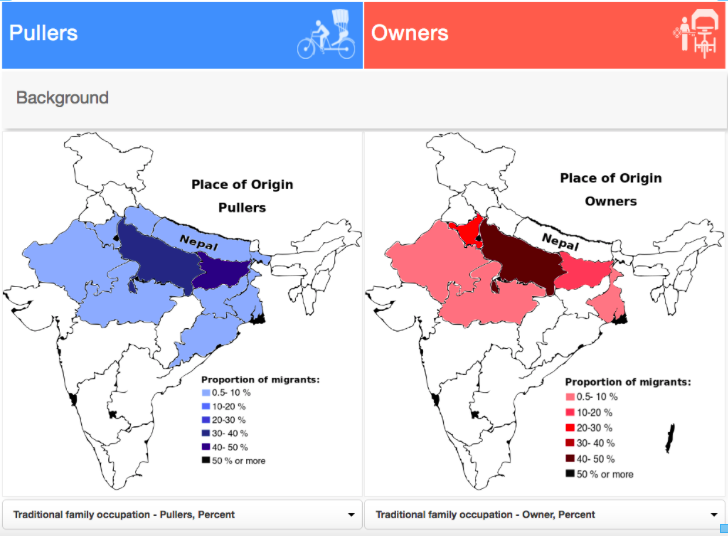|
Ruchi Varma, Program Manager-Urban Development, Community Systems Foundation Jayati Narain, Research Associate, OpenCities Institute From Urban Imperative by Edward Glaeser & Abha Joshi-Ghani, cities can best be understood as a ‘triad of forces’. While commonly seen as physical entities, such as streets, buildings, and subways, and viewed from the lens of the public sector, which defines the borders of the city and has the responsibility for providing clean water and public safety, Glaeser and Joshi-Ghani note that cities have a third, equally important, element. That is, “the magic of human interaction.” [1] Glaeser and Joshi-Ghani highlight throughout the text that cities go beyond physical entities and governmental units because “the real heart of the city is its people.” Considering cities are most commonly viewed with a structural lens, however, urban development often neglects addressing issues for those who are most vulnerable. Therefore, it is imperative to disrupt the ‘business as usual scenarios’ of urban development and instead apply approaches that are founded on sustainability and human rights. To explore innovative solutions and to apply a human rights lens on urban development, Community Systems Foundation’s (CSF) OpenCities Institute (OCI) has designed applied learning modules on sustainable urban development data in a course series called ‘Data Driven Cities. With datasets provided by the Institute for Democracy and Sustainability (IDS), these courses, like ‘Data Dashboards and Urban SDG,’ enable participants to design and engage with urban narratives to explore how different data visualizations on data dashboards can humanize, communicate and disseminate powerful urban data stories. This can be seen through the data dashboard on the ‘State of Cycle Rickshaws’ that was developed as learning material for this course. Generated using data provided by IDS from a 2000-2002 field research study, this dashboard presents analysis on the livelihoods of passenger cycle rickshaw drivers in the National Capital Region of Delhi (NCR), India. The aim of the study was to capture and quantify the stories and experiences of these workers. The final results were compiled by the states that form NCR, including Delhi, Haryana, Uttar Pradesh and Rajasthan. IDS later presented these findings in 2016 through a book edited by Rajendra Ravi titled “The State of Cycle Rickshaws: Identity and Struggle of Cycle Rickshaws in the National Capital Region”. [2] The ‘State of Cycle Rickshaws’ dashboard captures the process of passenger cycle rickshaw drivers moving to NCR in the hope of economic gain, the manner in which the city embraces them as migrants and how they have created lives as rickshaw pullers and owners. It also showcases their silent, yet dynamic, interactions with government authorities, considering policy affecting them often is limited to their operation. Visualising the livelihood and nature of work of this largely invisible informal labour force, the data dashboard acts as a tool to share the human aspect of cycle rickshaws in India. Additionally, the dashboard can act as a model for organisations to show how data dashboards can be utilized to share the voices and concerns of vulnerable populations. The Sustainable Development Goals (SDGs) is widely recognised as the People's Agenda. In this regard, it is critical to orient a people centric approach to goals that encompass urban development, like SDG 11 -- Make Cities and Human Settlements Inclusive, Safe, Resilient and Sustainable. With this in mind, the dashboard, and more broadly IDS’s study of cycle rickshaw pullers, is not merely evidence of the lives and contributions of rickshaw pullers but also demonstrates that city systems cannot address issues like mobility, water and waste in silos, but instead must consider holistically the ‘human condition’ in an urban age. While working on the mandate of data driven sustainable urban development with national and subnational governments, OCI recognises this dashboard as a means to soundboard the pivotal work and studies being done by grassroots and Civil Society Organisations to bridge gaps and ensure ’No One is Left Behind.’ [1] Glaeser, Edward; Joshi-Ghani, Abha. 2015. The Urban Imperative : Towards Competitive Cities. New Delhi: Oxford University Press. © World Bank. https://openknowledge.worldbank.org/handle/10986/23882 License: CC BY-NC-ND 3.0 IGO.
[2] Rajendra Ravi is an urban social planner, researcher, author and editor. Currently he is part of Sustainable Urban Mobility Network India (SUMNET), World Car-free Network, National Cyclist Union and Institute for Democracy and Sustainability (IDS) Delhi. [email protected]
0 Comments
Leave a Reply. |
Join the CSF data revolution webinar tomorrow!
COMMUNITY SYSTEMS FOUNDATION – EST 1963
+1 212 500 1335
data-driven sustainable development


